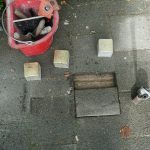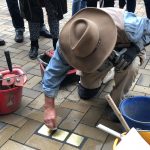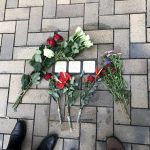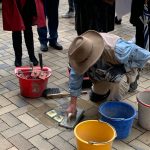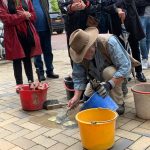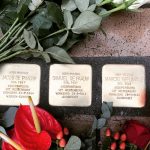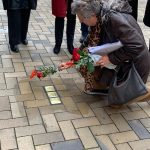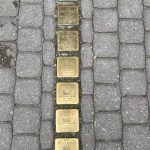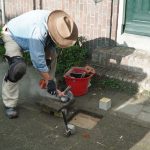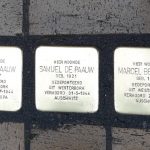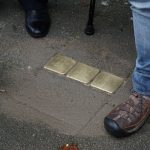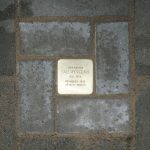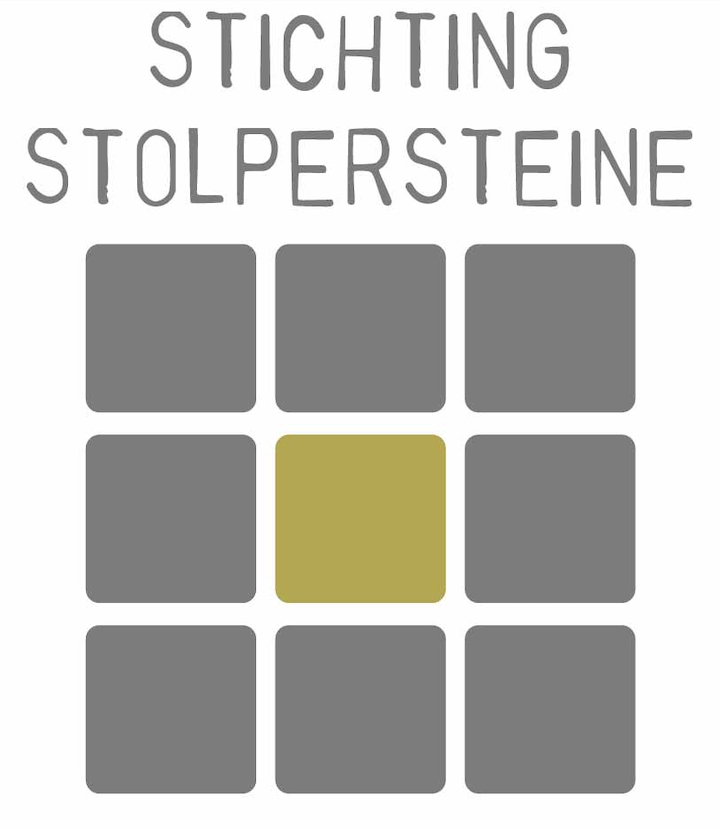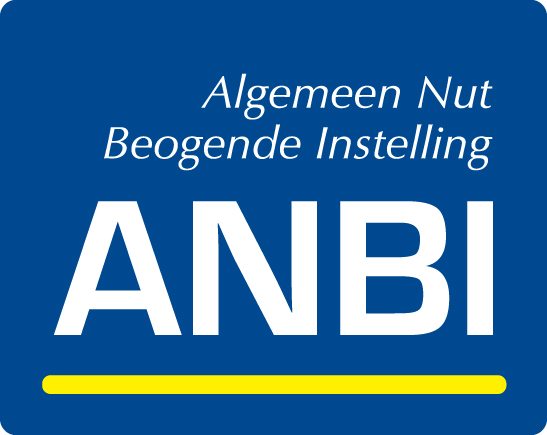What are Stolpersteine?
Stolpersteine, are made since 1992 by the artist Gunter Demnig (link). They are brass stones with which we commemorate the victims of National Socialism around and during the Second World War. The brass Stolpersteine is therefore placed in the pavement for the last (freely chosen) home of the victims.
On each brass stone is the name of one victim. This includes the year of birth, place and date of arrest by or on behalf of the regime (if applicable). And finally the place and date where the victim was killed or died.
LIVED HERE …
A stone..
A name.
A person.
Stolpersteine are memorial stones and emphatically not tombstones. They help us to think about the fate of victims around and during the Second World War. They bring families back together in memory that were suddenly torn apart under National Socialism.
There are Stolpersteine in at least 1,200 locations in Germany, Austria, Belgium, Croatia, Czech Republic, Finland, France, Greece, Italy, Hungary, Lithuania, Luxembourg, Moldova, the Netherlands, Norway, Poland, Romania, Russia, Slovakia, Slovenia, Spain, Switzerland and Ukraine.
The name "Stolperstein"
Stolpersteine is a German combination of the two words:
stolpern (“stumbling”) and Steine (“stones”). It is meant to get the feeling of “obstruction, obstacle”. Not literally of course, but to let bypassers-by pause and reflect.
Request
Anyone can request a Stolperstein. For anyone who was murdered by the Nazi regime, but also for victims who committed suicide because of the occupiers, had to go into hiding or otherwise suffered. The Stichting Stolpersteine does not want to express an opinion on who can be considered as a victim and who cannot.
Mission
Our mission is to keep the memory of the victims of National Socialism alive during and around the Second World War. The foundation does this by participating in the Stolpersteine project of the artist Gunter Demnig.
Gunter Demnig
Since 1992, German artist Gunter Demnig commemorates the victims of National Socialism with the Stolpersteine. And “the man with the hat and red scarf” keeps making these traces.
“The Talmud says that a person is only forgotten when his or her name is forgotten,” says Gunter Demnig. Stolpersteine placed in front of the buildings brings back the people who once lived here.
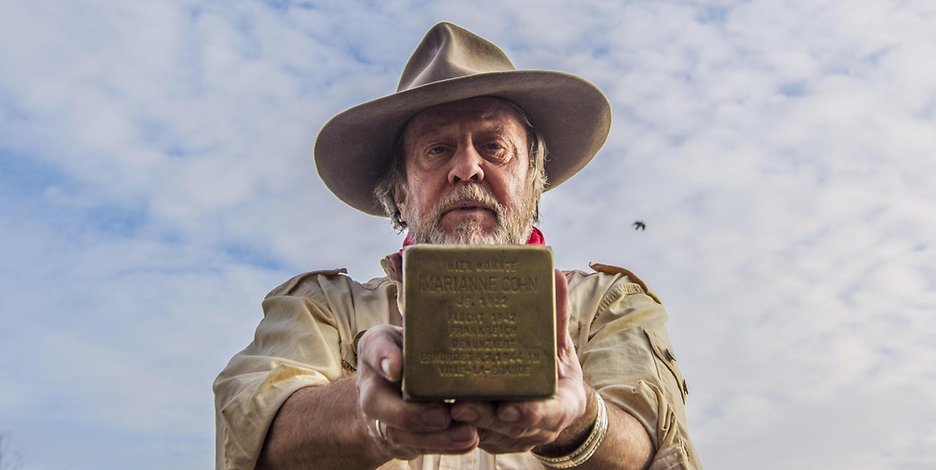
Gunter Demnig’s werk en leven
The later “track layer” previously studied art education at prof. Herbert Kaufmann in 1967. He later moved to Kassel, where he went to study liberal arts. He then worked as an assistant to the artist and art teacher Harry Kramer until he moved to Cologne in 1985.
Elements such as social criticism, political provocation, expressions in public space and a little anarchy have always been present in Demnig’s work. Inspired by activist artist Rudi Dutschke, his first art campaign in 1968 was a protest against the Vietnam War. He hung an American flag in a shop window in his native city of Berlin, but had replaced the stars with skulls. The flag was therefore removed by the police after three days. Demnig was arrested and eventually had to be taken out of custody by the well-known lawyer Otto Schily.
Gunter Demnig sees many of his works as preparation for the Stolpersteine project. This art monument eventually became his mission and life’s work. For this work he now travels more than 250 days a year and in this way he creates his art, now outside his studio. Every day he meets people, their history and shows the traces that history has left behind with his work.
An overview of all the places in his life, artworks and prizes that he won with this can be found on the artist’s website
www.gunterdemnig.de and at http://www.stolpersteine.eu/biographie
Support us
Stichting Stolpersteine is an officially recognised charitable not-for-profit organisation. This has been confirmed by the Dutch government with an ANBI status. This guarantees that all donations are used for the purpose of the foundation; the laying of Stolpersteine.
We currently work exclusively with volunteers and donations to cover the costs of laying the Stolpersteine.
If you want to support the work of the Stichting Stolpersteine, you can donate via:
Bank: IBAN: NL34TRIO2018081322 – Stichting Stolpersteine
